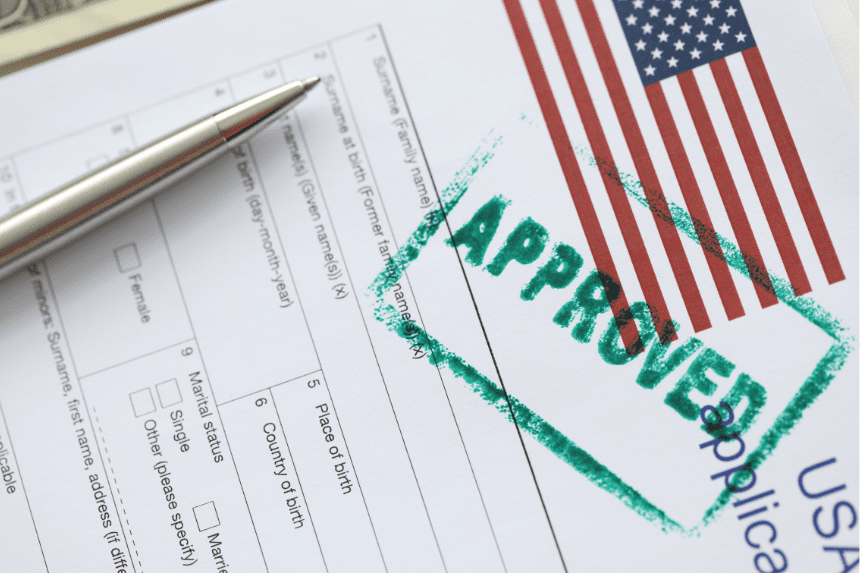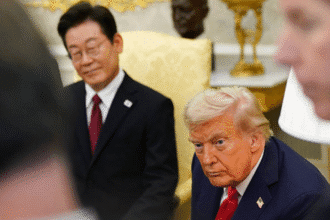Rising Indian deportations and the US visa policy execution clearly show a change starting this year. Significantly changing bilateral migration dynamics, more than a thousand Indian citizens have either voluntarily returned from the United States or been deported from it. About 62% of those who returned used commercial aircraft, according to India’s Ministry of External Affairs; others were deported on US-organized special flights. This uptick corresponds with increased US efforts to improve immigration enforcement, particularly under the Trump administration, which has vigorously pushed policies meant to lower illegal immigration.
- Why are current rising Indian deportations happening?
- What Alerts Has the US Released About Visa Overstays?
- How Does the New Visa Rule Affect Indian Students?
- Which more general immigration trends do these developments reflect?
- In what ways may people react to the evolving immigration scene?
- In summary, negotiating the era of rising Indian deportations and the US visa policy
From illegal immigrants to students, this trend influences a broad spectrum of people and emphasizes how dynamically US immigration policies and their execution processes are changing. Examining the underlying causes of the rise in deportations and the wider consequences of the US visa policy changes would help one to completely understand the present situation.
Why are current rising Indian deportations happening?
Rising Indian deportations and the US visa policy execution are directly related to the immigration crackdown of the Trump administration. Emphasizing tougher steps against illegal immigrants, the administration has made immigration control a top issue. Declaring close cooperation between the two nations, he openly pointed out that India “will do what’s right” with the deportation of illegal immigrants.
This cooperation has shown up as group operations to find, capture, and deport illegal immigrants into the US. For example, a US military flight deported more than a hundred Indians in February; some accounts suggest that these people were chained during the travel. While such stories have generated human rights issues, the US government argues that these deportations are legal and required to implement immigration laws.
India has been helpful by confirming the nationality of deportees before letting them back in, therefore guaranteeing that returning people are Indian citizens. Randhir Jaiswal, a spokesman for the Indian government, underlined that to uphold responsibility and openness in the deportation process, the Indian government collaboratively deals with US authorities.
According to US government estimates, some 18,000 Indian nationals live illegally in the nation at present. This number emphasizes the scope of the problem and the US dedication to spotting illegal immigrants, which is a major determinant of the increasing deportation statistics.
What Alerts Has the US Released About Visa Overstays?
Along with the deportations, the US Embassy in India has sent strong warnings against visa overstays. Whether a visitor, student, or work visa, overstaying a visa might have major repercussions, including deportation and permanent prohibitions on re-entry into the US. This warning holds even for those who came into the US lawfully but broke visa rules.
This policy posture fits the larger picture of growing Indian deportations and US visa regulation revisions. It shows Indian citizens and other foreigners the need for rigorous adherence to Visa rules and indicates a zero-tolerance attitude to immigration infractions.
For Indians living in the US right now, the message is clear: keeping legal status is essential to reduce chances for deportation. Those who intend to visit the US also need to be fully aware of these regulations to avoid unintentional infractions that would compromise their next trip or lodging.
How Does the New Visa Rule Affect Indian Students?
With the greatest community of international students in the United States, Indian students are among the most impacted groups by the increasing Indian deportations and US visa policies. Approximately 330,000 Indian students are registered at American colleges and institutions in the academic year 2023–24.
While it analyzes improved screening procedures involving the analysis of social media activity, the US government recently announced a temporary stop on scheduling new visa interviews for foreign students. For Indian students intending to enroll or continue their studies in the US, this policy shift presents uncertainty.
Mr. Jaiswal said at a ministry briefing that despite these developments, Indian students should be able to join their academic programs on time and that their visa applications will be evaluated equitably. Still, students and their families should keep alert and current on the changing visa policies.
These policy changes are part of a larger plan to tighten immigration restrictions and guarantee that foreign citizens arriving in the US follow new security criteria. They also damage their academic ambitions and prospects by raising the administrative obstacles and waiting times for applicants for student visas. Read another article on the Afghan Deportation Crisis: Causes.
Which more general immigration trends do these developments reflect?
Part of a larger trend of tougher US immigration rules, the emphasis is on Indian nationals. The administration has also declared intentions to aggressively cancel visas for Chinese students connected to the Chinese Communist Party or researching vital national security issues. These actions capture mounting worries about intellectual property theft and espionage.
Rising Indian deportations and US visa policy changes within this larger framework of US national security and immigration reform initiatives are placed in perspective. The more monitoring, enforcement, and diplomatic collaboration show how immigration policy is changing to fit fresh geopolitical concerns.
For Indian immigrants and students, this emphasizes even more the need to follow visa rules. Maintaining good legal standing and keeping current with legislative changes will help one stay out of this increasingly narrow net.
In what ways may people react to the evolving immigration scene?
Indians living in or intending to visit the US have to act proactively, considering the changing circumstances. First, it is vital to routinely check the validity of visas and follow the requirements of every category. People should seek professional legal assistance when confused about their position and renew or change their visas well before their expiration.
Second, knowing and following US immigration rules will help you avoid inadvertent infractions. Students should know, for instance, the policies on job authorization, travel limits, and academic program modifications that can compromise their visa status.
Third, keeping current on statements from official US and Indian government sources helps one to promptly learn about policy changes. Following these rules lets people negotiate the system more boldly.
Lastly, for those facing legal issues or deportation, getting competent immigration guidance right away can greatly affect results. Legal professionals can provide direction on waivers, appeals, or substitute visas.
In summary, negotiating the era of rising Indian deportations and the US visa policy
Rising Indian deportations and US visa policy enforcement reflect a larger US dedication to immigration control and national security at the current time. Indians intending to visit, study, or work in the US have to be aware of the changed terrain and act early.
Working together, the US and Indian governments hope to guarantee orderly migration while also handling illicit immigration and overstays. But these changing surroundings call for attention to the norms followed by immigrants and pupils.
The greatest way to effectively negotiate these changes and reduce the risk connected with deportation or visa denials is ultimately knowledge, compliance, and preparation. Keeping abreast of policy changes helps people to keep their legal status and carry on confidently pursuing their interests in the United States.








